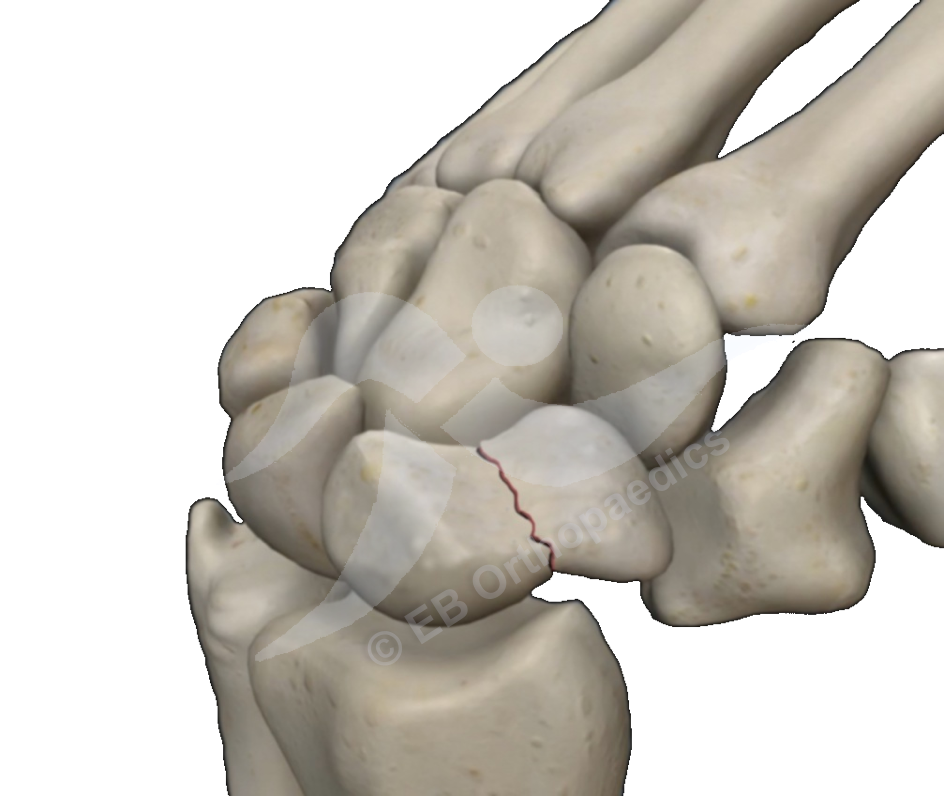Scaphoid fractures

Scaphoid fractures usually occur following a fall onto an outstretched hand. Pain is usually felt around the base of the thumb and wrist and as such they may be confused with wrist sprains or fractures.
Scaphoid bones are different to many of the bones in the body in that they have a blood supply that enters from the distal aspect. This means that if the bone is broken, part of it can be starved of blood and can go on to crumble (avascular necrosis). If this happens then there is a rapid progression of degenerative changes in the wrist (arthritis). This is why possible scaphoid fractures are assessed carefully.
The majority of scaphoid fractures heal but in some cases they may not. This is known as a non-union.
An acute fracture occurs following a traumatic event. An acute fracture occurs following a traumatic event. Non-unions are more likely in people who smoke, including vaping with nicotine.
The main symptoms are pain and stiffness of the wrist. The pain tends to be centred around the base of the thumb in the hollow (anatomical snuffbox). There can be tenderness around this area and on the palm of the hand.
The majority of scaphoid fracture heal following a period of immobilisation in plaster. The biggest risk of the bone not healing is in those people who smoke, including vaping with nicotine.
If the fracture is displaced significantly, or if it has not healed, then surgery will usually be advised. The specifics of the surgery will depend on the nature of the fracture. This includes whether it is a new (acute) fracture or a non-union, as well as the location of the fracture within the bone.
Surgery usually involves placing a screw across the fracture site to stabilise the bone. Sometimes bone graft is need which is taken from either another area in your wrist, or your iliac crest (just above your hip). The specifics can be discussed with your surgeon.
After surgery you will be in a plaster. You will be encouraged to keep the fingers, elbow and shoulder moving. After the plaster is removed your fingers will be stiff and you will be advised of the particular exercises that are right for you.
The results of surgery are generally good but depend on many factors, including whether it is a new or old fracture and whether there are any degenerative changes in your wrist already. What to expect will be discussed with you prior to any surgery.